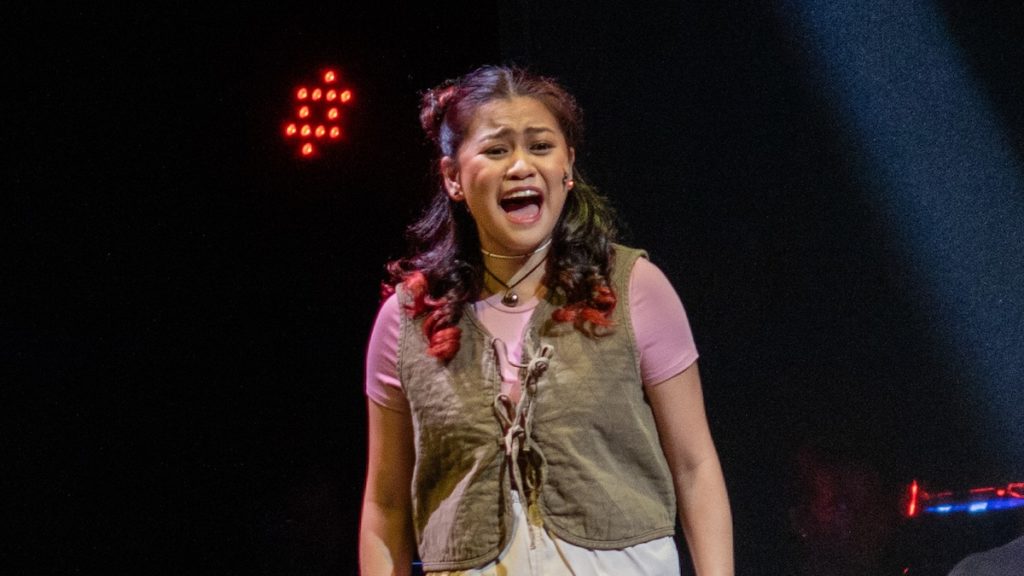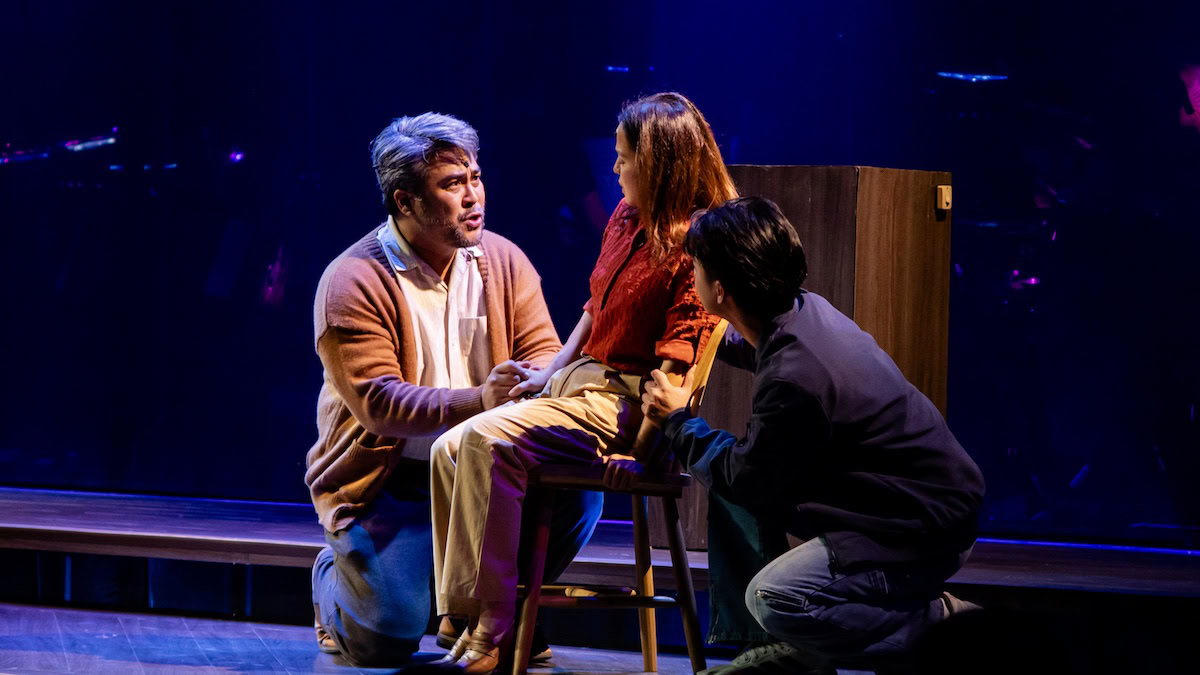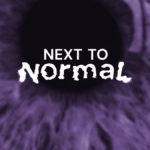There are very few musicals that I would consider as “Plug and Play” productions. Classic material that is so good, you’d have to try REALLY hard to screw it up: Think “Fiddler on the Roof” with its familiarity and strong score, or perhaps even something like “The Rocky Horror Show” which allows a lot of flexibility due to the organic absurdity of its plot. “Next to Normal”, penned by Brian Yorkey, with music by Tom Kitt, is one of these productions. It is unique in that its undeniable success as a play not only lies with its tight book and its amazing score, but also in its raw and resonant subject matter.
Premiering in 2008, the Pulitzer Award winning “Next to Normal” follows the story of Diana Goodman as she struggles with bipolar disorder, chronicling her descent, and the ripple effects that extend outwards in her family: her tragically optimistic husband, neglected daughter, and her mercurial son. We are taken on an emotional ride through rounds of medication and therapy, all while watching a life fall apart piece by piece. It is a brilliant exploration of how mental illness is perceived and addressed, as well as bringing to the surface the sensitive humanitarian and medical ethics involved in its treatment.
First, The Sandbox Collective should be lauded for the decision to stage the show in a country that still views mental health with suspicion. The Philippines hardly blazes a trail in the pursuit of greater understanding and acceptance for people who live with psychological issues of any stripe. There is a dearth of media on the subject, much less compelling media, that would make inroads into a greater sense of openness. Hence: any opportunity to educate will always be welcome.
Directed by Toff De Venecia, with musical direction by Ejay Yatco, and production design/associate direction by Mark Daniel Dalacat, The Sandbox Collective ushers in 2025 with a new take on Next To Normal. The production boasts a robust cast that includes Sheila Valderrama and Nikki Valdez alternating in the role of Diana Goodman, OJ Mariano and Floyd Tena as Dan, Sheena Belarmino and Jam Binay as Natalie, Vino Mabalot and Benedix Ramos as Gabe, Davy Narciso and Omar Uddin as Henry, and Jef Flores as Dr. Madden.
The cast turned out vocally strong performances. As a score, “Next to Normal” is extremely technical, and coupled with the acutely emotional charge carried by the plot makes every role a difficult one to take on, even for seasoned actors. In this regard, the cast delivered across the board. Of particular note was the flawless vocal performance of Floyd Tena as Diana’s long-suffering husband, Dan. He distinguishes himself through the masterful use of a full-bodied tenor-baritone that really soars, fully inhabiting the stage and creating a deeply sensitive experience, in what could be one of the most underrated male roles in modern theater. As an erstwhile fan of the show, the raw, vocal talent of the cast does tick all the boxes when it comes to expectations.

It is therefore unfortunate that the production surrounding this group of talented actors fail to deliver at the same level. It is critical for the technical aspects of the show to support and build the atmosphere within which the actors weave the tale, and suspend the disbelief of the audience, especially for something as abstract and cerebral as this play. The play is traditionally staged representing different parts of a house, representing the different fragments of Diana’s mind. This is usually expressed in a minimalist set piece with platforms and different incidental furniture. The way this production was lit, however, makes the stage design by Dalacat somehow cold, and underwhelming. Considering its size, there’s very little sense of depth when action occurs in different places of the stage. The lighting design by Gabo Tolentino is very flat, where the entire stage is often lit the same even if the scene toggles from location to location, or even between different rooms in the Goodman house. The other issue with the lighting is perhaps the management and execution of cues. There are jarring mistakes in the timing, so much so that it distracts from the action onstage, and makes one wonder what’s happening up on the tech booth.
Which brings us to the sound design by Aji Manalo. One can’t be sure if the issue with the sound is the result of the limitations of the venue’s sound system, or there’s something else afoot. The show’s score utilizes a lot of complex full-throated harmonies that are meant to sound as if teetering on the edge of dissonance, and if not handled and mixed properly, it becomes a muddled shouting match between any number of powerful voices. Half the time the audio in this production is an unbalanced wall of sound that is, unless you have memorized the libretto, largely unintelligible gibberish: Which is a shame, given how wonderful the assembled cast, and how beautiful the score actually is. It is particularly tragic how it seems the talented Jam Binay, who plays the oft overlooked daughter Natalie, drew the short straw and was assigned the worst mics in the box, leading one to think how uncannily (and unfortunately) life mirrors art.
That being said, it is still a story worth telling. The message endures, and even if the production around it distracts from the material somewhat, the emotional core of the narrative remains undiminished. It is what makes this material evergreen, and allows it to be a peer among great stories made for theater: No matter how you change the extraneous elements around, it remains compelling, raw, and ultimately meaningful. Diana’s story is one of perseverance, of the struggle to keep one’s sense of self and identity together in the face of a debilitating condition that despite the intentions of those around her, cannot be truly understood by other people. Her journey as she navigates a world that was not built to accommodate her, and her struggle as a wife and mother to maintain fragile lines of communication between her husband and daughter, will always elicit a deep and visceral reaction when you watch it unfold onstage. You needn’t suffer from a mental disorder to recognize that feeling of disconnectedness, that feeling of desperation, that drives you to employ extreme measures just to feel alive. In the deluge of chaos and uncertainty, it’s family that is meant to keep your head above water. And while most of us will never know the extreme situation that the Goodmans face, it takes the same modicum of understanding and respect that allows us to get through another day.
Next to Normal runs (with no extensions) at Power Mac Center Spotlight Blackbox Theater, Circuit Makati until February 23, 2025. Tickets are available via Ticket2Me.
Click here for more stories like this. You may also follow and subscribe to our social media accounts: Facebook, YouTube, Instagram, TikTok, X, and Kumu.






















